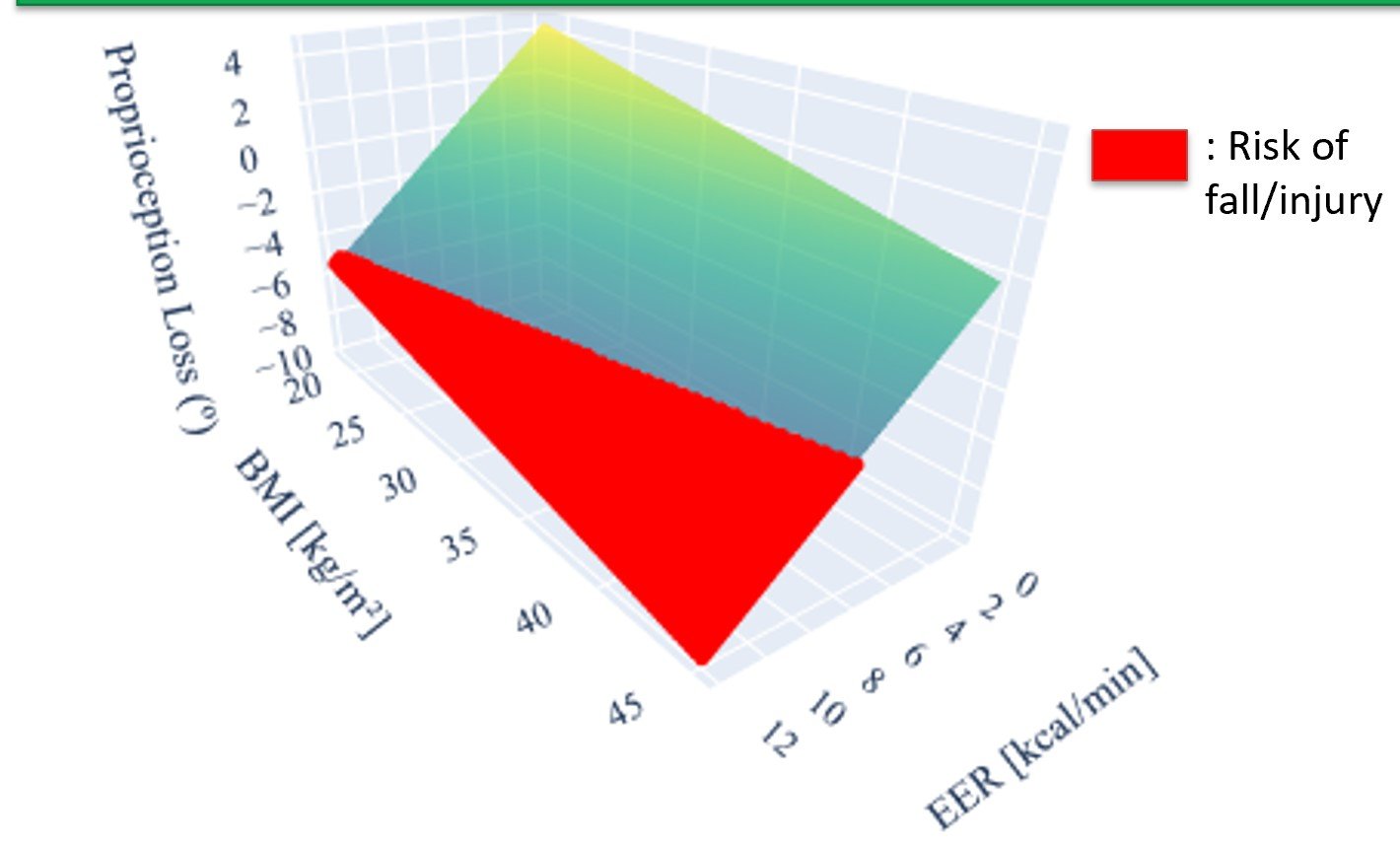Proprioception Device
The proprioception measurement device yielded promising results during testing, demonstrating its ability to accurately capture data on joint stability and balance awareness. In trials conducted with diverse populations, the device successfully identified deficits in proprioceptive performance, which were linked to elevated BMI and an increased risk of injury. This data aligns with existing research connecting elevated BMI to reduced knee proprioception and heightened injury risk. Integration with motion capture systems ensured seamless data synchronization, enhancing the reliability of the biomechanical insights.
A predictive model was developed using these proprioception metrics, incorporating energy expenditure and changes in joint angles associated with proprioceptive deficits to estimate injury risk. This is shown in the provided graph.
This work was part of a broader study that evaluated injury risk factors and advanced the development of predictive models, positioning the device as a valuable tool for injury prevention, rehabilitation, and biomechanics research.





